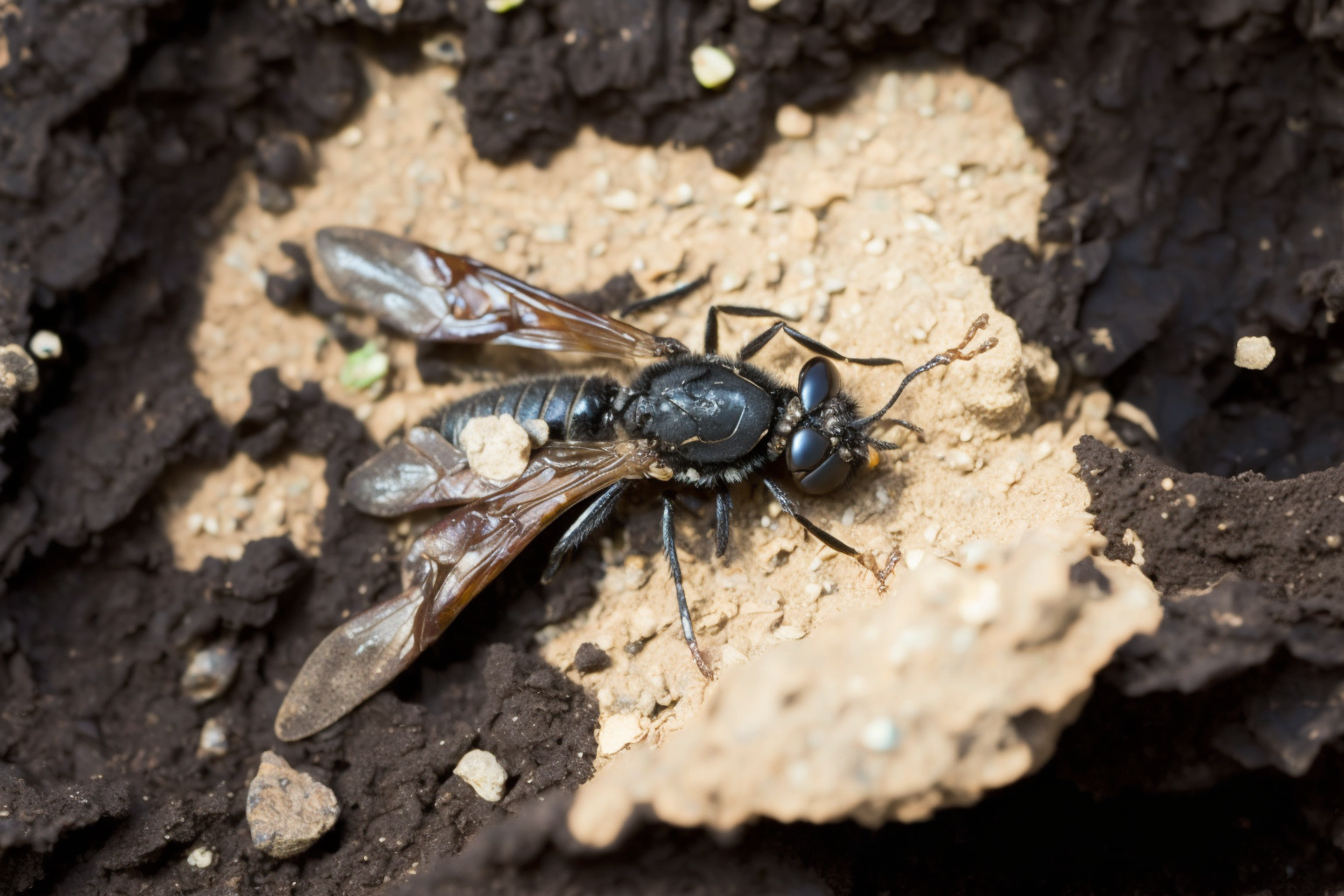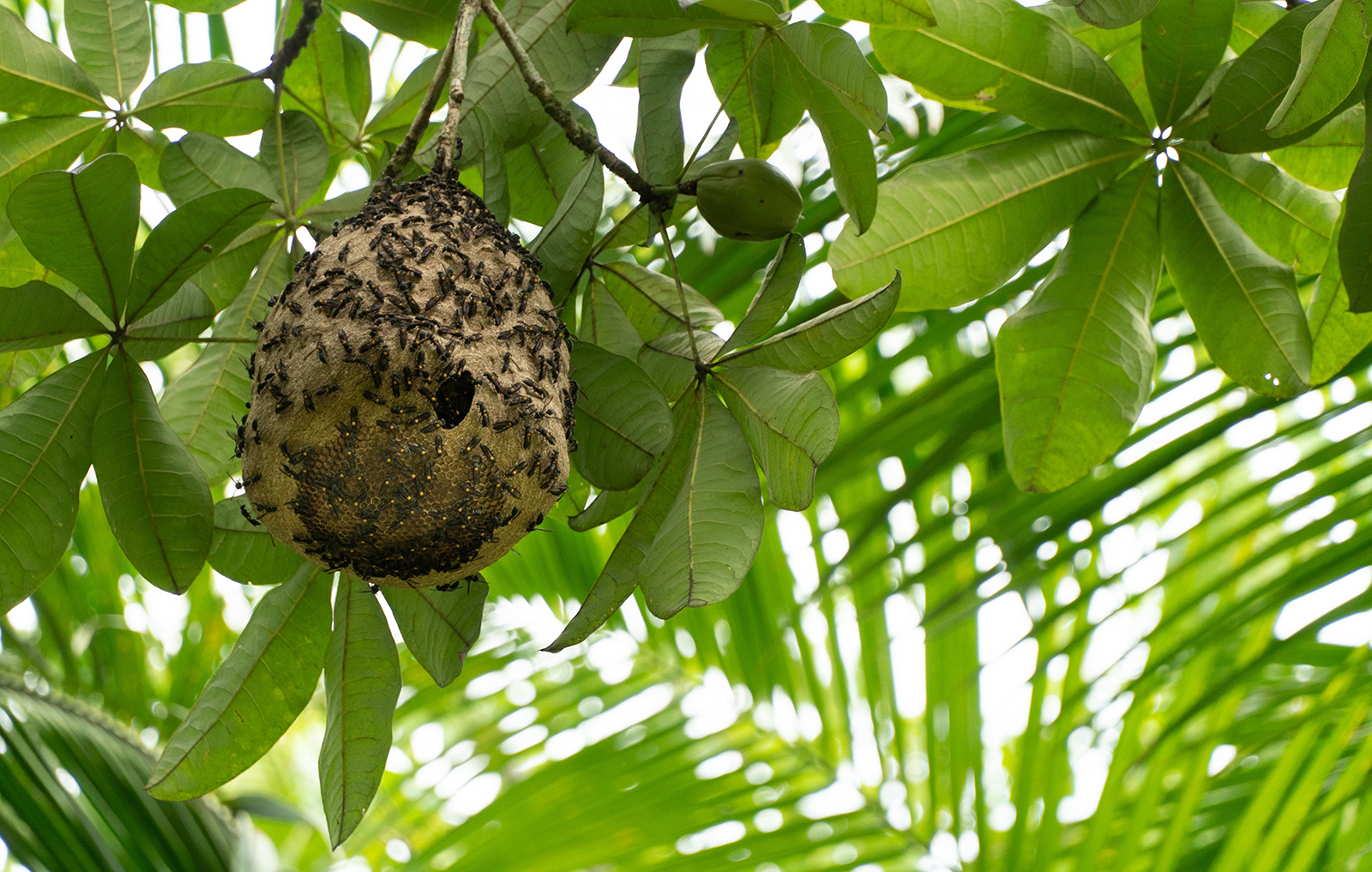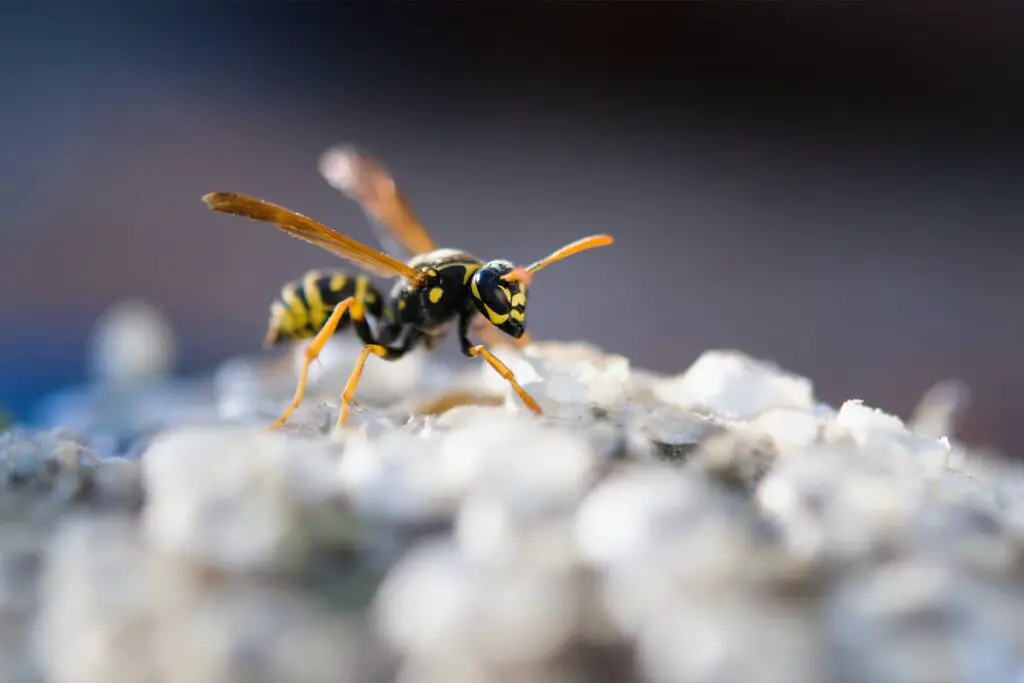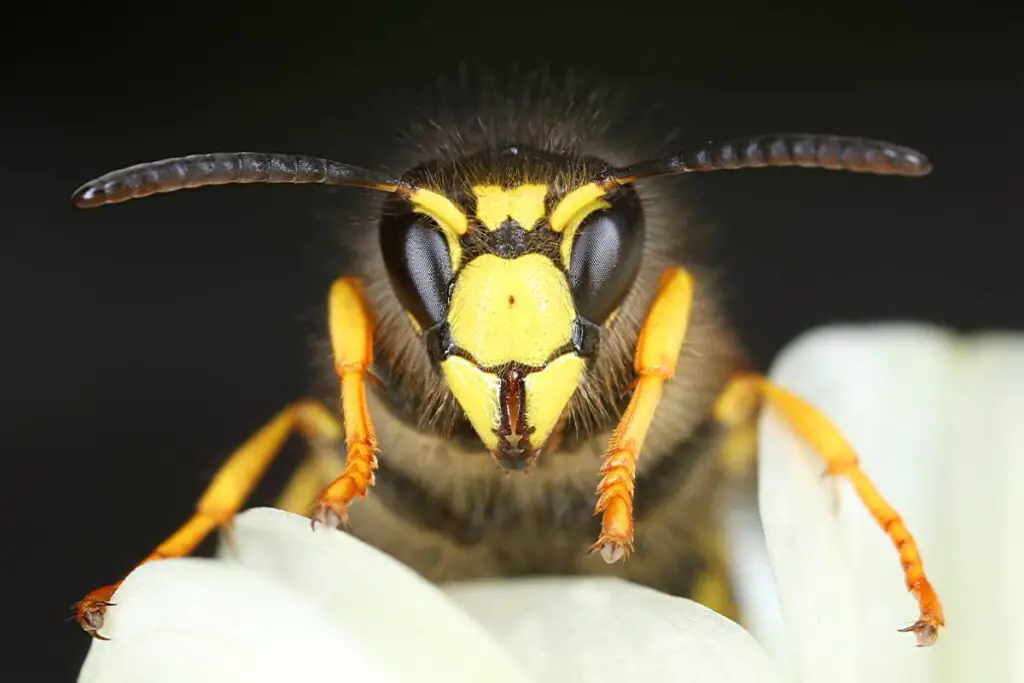
As someone interested in (and a little unnerved by) the behavior of wasps, I’ve always been curious about the notion that when a wasp is killed, it releases pheromones that attract other wasps to the area. It’s a fascinating and potentially important topic, as understanding these chemical signals could help us better manage wasp populations and possibly avoid getting stung by these insects.
There is evidence suggesting that wasps release alarm pheromones when they are killed. These chemical messages travel through the air and influence other wasps’ behavior, making them better able to coordinate their response to a potential threat.
This intriguing capability raises questions about how we should approach dealing with wasps and whether conventional methods of swatting or killing them could have unintended consequences.
Do Wasps Release Pheromones When Killed?
In my research I found that there’s some debate about whether wasps release pheromones when they are killed. Some argue that the odor of a dead wasp is too faint to be detected by other wasps, while others believe that these insects release pheromones upon their death.
According to a Pests Tribune, when a wasp feels threatened or is killed its body can emit a chemical signal that attracts other wasps to the area. These pheromones serve as a warning to other wasps that there’s danger nearby so they can react accordingly.
Furthermore, social wasps and bees are known to use pheromones to communicate various messages; one of them being danger. Upon being killed, wasps release a pheromone that alerts other wasps of the threat. However, it’s important to note that unless the death occurs near a wasp nest, it’s unlikely that a dead wasp will attract others.
We should be cautious when dealing with wasps, as killing one could potentially put us at risk of provoking more into attacking. Being aware of this, we should approach wasp-related situations with caution to minimize any risk to ourselves and others.

Types of Wasp Pheromones
Let’s have a look at the different kinds of pheromones that wasps utilize in their day-to-day lives.
Alarm Pheromones
Alarm pheromones play a vital role in the collective defense of wasp colonies. When a nest is disturbed or under threat, wasp guards release these chemical signals to alert their fellow colony members. These pheromones help rally the troops, causing the wasps to swarm out of the nest and attack the intruder. This fascinating phenomenon has been well-documented in studies by the Smithsonian Institution and other entomology researchers.
Aggregation Pheromones
Aggregation pheromones serve a different purpose in the wasp world. They help bring wasps together, either to build new nests or to feed on a common food source – like other insects. Some examples include the pheromones released by scale insects, which attract certain wasp species to lay their eggs and serve as parasites while feeding on the scale insects. This relationship is mutually beneficial for both insects, as the wasps help control scale insect populations.
Sex Pheromones
Sex pheromones are released by wasps, as with many insect species, to attract potential mates. These chemical signals are particularly important in the mating process because they ensure the continuation of the species. One interesting example is the pheromone named seducin, which is produced by some male cockroaches and crickets. This substance acts as an aphrodisiac and is nibbled on by females during the copulation process, as reported by the Smithsonian Institution.
Wasp Behavior and Communication
Wasp behavior and communication plays a significant role in their species’ survival and social activity. In this section, we will discuss how wasps defend their nests and recruit other workers when necessary.
Wasp Nest Defense
When the nest is threatened wasps have to act quickly to protect their home and colony. One way they achieve this is through the use of pheromones, which are chemical messengers that travel through the air and affect the behavior of other wasps. For instance, if a hive or nest is disturbed, guard wasps will release pheromones to alert other wasps about the impending danger.
These pheromones act as an alarm system, rallying others to swarm out of the nest and attack the intruder. This response is crucial to their survival, as it allows them to defend their territory and resources. Additionally, when a wasp is killed, it has been suggested that its body releases a chemical signal that attracts other wasps to the area as a form of defense.
Recruitment of Workers
As a social wasp, maintaining a thriving colony is of utmost importance. Their communication plays a vital role in this process, which is why they rely heavily on pheromones for intra- and interspecific communication.
One example of this pheromone communication can be seen when they have to recruit new workers for the nest. When a task needs to be accomplished or more workers are required, they release pheromones to send this message to their fellow colony members. This signal helps to recruit additional workers to ensure that the colony’s needs are met efficiently and effectively.
Wasp behavior and communication are deeply intertwined, allowing them to work as a well-coordinated and highly social group. Their use of pheromones in particular enables them to defend their nests and recruit workers, ensuring the prosperity and survival of the colony.
Human Intervention and Consequences
Accidental Encounters with Wasps
In my experience, taking a wasp nest by surprise almost inevitable leads to painful stings. When a wasp is killed it’s possible that its body releases pheromones, which are chemical signals that can trigger an alarm response among fellow wasps, causing them to swarm and become aggressive. This can be highly dangerous.
Try to avoid sudden movements or swatting at wasps, as this may provoke them or inadvertently crush one, leading to the potential release of alarm pheromones.
Removing Wasp Nests
Should you come across a wasp nest on your property, understand the importance of careful and proper removal. There’s a risk of agitating the wasps and triggering the release of alarm pheromones if the nest is disturbed or damaged.
In most cases the removal is best left to a professional, but if you’re feeling confident here are some steps for safely removing a wasp nest:
- Assess the situation: Gauge the size of the nest and the number of wasps present.
- Take precautions: Wear protective clothing and ensure all exposed skin is covered.
- Choose an appropriate time: Late evening or early morning, when the wasps are less active, is typically the best time for nest removal.
- Use proper tools or contact a professional: Consider using a wasp spray or insecticide, or contact a pest control professional for safe and effective removal.
By following these steps you will minimize the risk of wasps becoming agitated, helping to prevent the release of alarm pheromones and potential stinging incidents.
Prevention and Safety Tips
If you are struggling with a wasp problem, for your own safety it’s important to keep a clean environment around your home. Avoid planting flowers and/or other plants that may attract them. It’s essential to not leave any food outside, including pet food, as it can lure them into your property. Additionally, make it a habit to wipe down your outside tables after meals to prevent attracting wasps with food remnants or liquids.
When you encounter a wasp, avoid swatting or agitating it, as it may provoke a sting or release pheromones that will attract more insects. Instead, calmly and slowly walk away from the wasp to avoid unwanted attention.
If you suspect wasps have taken up residence near your home or in your yard, prioritize safety by contacting a professional pest control service to handle the situation. They have the necessary skills and equipment to remove the nest without any risk of releasing pheromones and triggering an attack.
Driven by a passion for those tiny creatures that rule our world, we at Bug Domain strive to be your go-to resource for information on insects.



